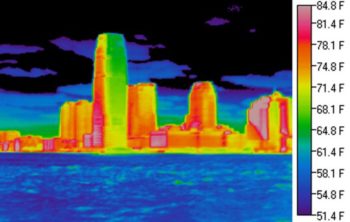
It has long been acknowledged by scientists that significant changes in deep ocean heat content have occurred in the past in the absence of changes or forcing from CO2. Stott et al. (2007), for example, conclude that deep ocean temperatures rose by 2°C within a 2,000-year time span (19,000 to 17,000 years ago) about a 1,000 years before CO2 concentrations (and surface temperatures) began to rise.
Deep sea temperatures warmed by ~2C between 19 and 17 ka B.P., leading the rise in atmospheric CO2 and tropical surface ocean warming by ~1000 years.
Similarly, Demezhko and Gornostaeva (2015) found that the heat energy change in the deep oceans during the climate transition from the last ice age to this current interglacial occurred “2-3 thousands of years” before the increases in surface temperature and CO2, and that “the increase of carbon dioxide may be a consequence [rather than a cause] of temperature increasing”. The authors then acknowledge that this suggests that there was “no significant contribution of CO2 forcing to climatically caused heat flux and thus to the temperature increase during the Pleistocene-Holocene warming”.
Demezhko and Gornostaeva, 2015
Despite the substantial dispersion of CO2 estimations, a character and a chronology of CO2 concentration changes are much closer to temperature changes rather than to heat flux variations. It may mean no significant contribution of CO2 forcing to climatically caused heat flux and thus to the temperature increase during Pleistocene‚ÄìHolocene warming. About 10 kyr BP the increase of carbon dioxide concentration was replaced by its fall which ended about 8 kyr BP. This local minimum [in CO2 concentration] is not consistent with either GST [ground surface temperature] or SHF [surface heat flux] histories. … The reconstructed surface heat flux reflects impact of all possible sources of radiative forcing. In addition to solar insolation, greenhouse gases (such as CO2) can be a source of additional forcing. On the other hand the increase of carbon dioxide may be a consequence of temperature increasing. Comparing the chronology of surface flux, temperature and carbon dioxide concentration changes, we can draw some conclusions about the causes of climate change. … The increase of carbon dioxide concentrations occurred 2‚Äì3 thousands of years later than the heat flux increase and synchronously with temperature response.
Scientists Ellis and Palmer (2016) get right to the point and conclude CO2 plays “little or no” role in forcing the warming during interglacial periods…
Conclusion: [I]nterglacial warming is eccentricity and polar ice regrowth regulated, Great Summer forced, and dust-ice albedo amplified. And the greenhouse-gas attributes of CO2 play little or no part in this complex feedback system.
….while scientists Douglass and Knox (2014) identify the source of modern deep ocean temperature forcing that has an “unquestionably solar origin” manifested by El Ni√±o/La Ni√±a phenomena.
Global ocean temperature time series from the surface to depths of 2000 m since the year 2000 are found to agree in detail with those of other diverse climate indices. It is asserted that these systems are driven by a forcing unquestionably of solar origin that has two manifestations: (1) a direct phase-locked response to what is identified as a solar forcing at a frequency of 1.0 cycle/yr for the whole time series; (2) a second phase-locked response at a period of two years or three years. With these findings it is becoming clear that the entire climate system is responding to the varying incident solar radiation… The most prominent manifestations of the pattern are found in the El Ni√±o/La Ni√±a phenomena.
Advocates of the assumption that CO2 variations are a primary cause of changes in deep ocean heat content (i.e., those who author government-sponsored IPCC reports and activists for the anthropogenic global warming cause) have necessarily believed that past natural variations in deep ocean heat content are very slow and gradual. They have presumed that the forcing from Milankovitch cycles (changes in solar radiation absorbed by the Earth’s surface due to orbital variations) are the cause of deep ocean changes over time, but that these changes occur only as slowly as orbital variations occur — on millennial scales (“several thousand years“), not in decades to centuries. In this way, they can deny that the Sun plays a role in modern climate changes…despite burgeoning evidence to the contrary. The Stott et al. (2007) finding that deep oceans warmed at a rate of 1¬∞C/1,000 years referenced above would be consistent with these assumptions.
Brown University geologist Samantha Bova and her colleagues reach a different conclusion, however, in a paper just published online for the prestigious journal Geophysical Research Letters. These scientists have found that, in the absence of any significant CO2 concentration changes or human influence during the Holocene (i.e., the last ~10,000 years), the deep oceans naturally warmed by more than 2¬∞C in a span of just 200 years, which is several times the rate in which they are alleged to have warmed in the last ~60 years of the supposedly dominant anthropogenic influence on climate. In fact, Bova et al. (2016) conclude that deep ocean temperature changes for the last 200 years are apparently so negligible they are “below the detection limits”.
















